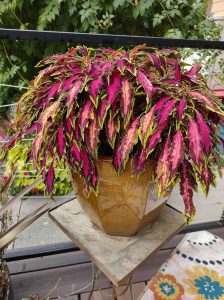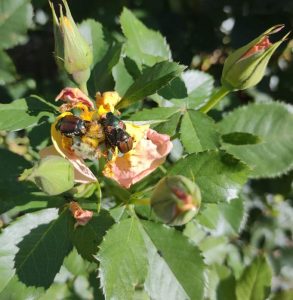We’ve had such unusual weather this year here in Northern Colorado. In a typical August, our lawns have gone brown and dormant by now and we are crying about our water bills. Although this year is different, we should not stop trying to conserve water and be water efficient.
Did you know only 3% of our overall water supply is spent on landscaping? Yet it seems that landscaping is always the scapegoat for water conservation. This is because water used on landscaping is very difficult to reclaim. Sure, it recharges groundwater and eventually makes it’s way back to a river or water basin, but by then it has moved out of the water purveyor’s realm. On the other hand, landscape water use can be up to 85% of your monthly bill. For that reason alone, it makes sense to save water in your landscaping. Here are some tips to water both efficiently and effectively.
- Keep the water on the grass or the planting bed, off the concrete or other structures.
- Fast watering is never good. Water slowly, especially when watering in the winter as the cold soil doesn’t absorb the water as quickly. Use a gentle trickle from your hose when winter watering trees and shrubs.
- Watering is imperative, but your soil determines the effectiveness of the watering. Your turf grass and other plantings are only as good as your soil!
- Different types of grass used for turf areas use water differently. Know what type you have (Kentucky Blue, Tall Fescue, Rye Grass, or a blend) and know when it is actively growing and its water requirements.
- Most trees are watered with the turf grass and planting beds. Watch, however, that your trees are getting enough water – especially during watering restrictions.
- Use a bell-curve application rate through the season. You can expect to use the least amount of water in the early spring, peak in July or early-August, and then curve back down to low autumn usage.
- Depending on the precipitation rate of your sprinkler heads, run-off can begin in as few as 10 minutes. To water more effectively, split the run time into short “cycle-and-soak” times. Example: instead of one 20 minute run, break into 3 separate 7 minutes runs about 1 hour apart.
- If your sprinkler heads have a very high precipitation rate, you make consider swapping for low-flow or stream rotor heads. Watering too fast also causes run-off.
- Do not mix-and-match sprinkler types. Do not use sprays and rotors on the same zone. Do not add drip irrigation to a spray zone, even a micro-spray zone. Use matched precipitation heads whenever possible.
- A watering strategy that wets the soil thoroughly also encourages deep root growth. Strive to water deeply and infrequently.
- Get to know your irrigation timer. A smart controller is a good investment, but an attentive gardener is still more effective. When we get rain (and this year we’ve had a lot), delay watering for a few days. The irrigation timer should not be turned on in the spring and then ignored. Your bell-curve application rate means you should expect to adjust the watering durations every 2 weeks.
- Watering between the hours of midnight and 6 am minimizes loss to evaporation and wind.
- Check the soil for moisture content before watering. This is especially important in the spring. Poke a spade or a screw driver down into the soil to check for moisture before assuming you need to water.



